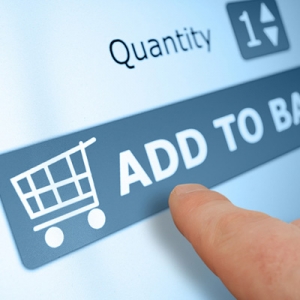Shopping online just gets bigger and bigger, year on year. From avoiding the crowds or the Christmas rush to finding the best bargains, there are lots of reasons to embrace shopping from the comfort of your sofa. It’s a trend that’s here to stay.
The downside is that cybercriminals are experts in cashing in on new trends and online shoppers are on their radar. You might get mugged while doing traditional shopping but there are equivalent and additional dangers when you shop online. Here are four best practices so you can shop online safely and securely.
1. Make Sure Your PC is Secure
This may sound too obvious to be worth stating, but it’s easy to fall behind on computer security. Make sure your security software is up-to-date and don’t assume that everything always updates itself – because it doesn’t. You could even consider doing a scan before carrying out online transactions, especially for higher value purchases. A trick that cybercriminals use is planting a keylogger in your computer. This will record every keystroke that you make. If it detects something that could be useful, including sensitive data, this information is automatically forwarded to the bad guys. Also make sure your web browser and operating system are up-to-date, because cybercriminals have long since found the gaps to exploit in older versions.
2. Shop on Sites You Know are Trustworthy
You’ll find lots of enticing deals when you shop online. This is even more true now, with personalized ads. Cybercriminals work by tempting you before reeling you in. There’s a wise old saying: if something sounds too good to be true then it probably is. When you see an ad for an iPad for 70% off, that should ring warning bells. It’s not that this iPad might have something wrong with it. It might not exist at all. The ad is designed purely to get you to click on a link that takes you to a shady website run by crooks. You can avoid this by shopping with the well-known big companies, but if you go to an unfamiliar site (and we all do), research it first. Bizrate.com and ResellerRatings.com can give you information on whether the vendor site is respectable and trustworthy.
3. Your Browser’s Padlock
You might not even have noticed it but, in your browser tab’s address field, on the left-hand side, is a small padlock. If it’s in the locked position it means that the site has a secure socket layer (SSL). This is an encryption measure to make the site safer. You can double check by looking at the URL of the website. Secure websites that start with https://, not just http://, are legitimate SSL sites. Some security software gives you the additional option of opening a webpage in a secure window. Avast calls this the Safezone. It’s an extra measure you can take to make sure your financial information stays private.
4. Use a Credit Card, not a Debit Card
If you use a credit card you can ‘charge back’ fraudulent transactions if you do it within a given time period, so check your bank statements often to see if any strange transactions have appeared. You can’t do this with your debit card, so avoid using it for online shopping. The most secure online shopping options are rechargeable credit cards and gift cards.
We did say we’d give you four tips, but here are some more, just in case. 1) Don’t use public Wi-Fi connections for online shopping; 2) Use a retailer’s official app when shopping; and 3) Always use strong passwords. Use common sense and if something smells bad then it’s probably rotten.
If you want the best protection for your accounts when shopping, Quikteks can help. We can check your PC and mobile devices for malware, spyware and other threats. We can install, monitor and maintain your antivirus software and firewall, so you can shop online with confidence. Call us today at (973) 882-4644 for advice.

